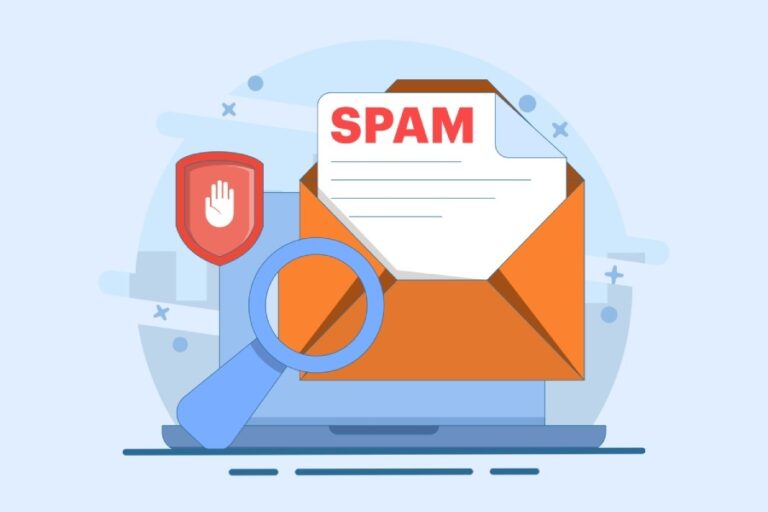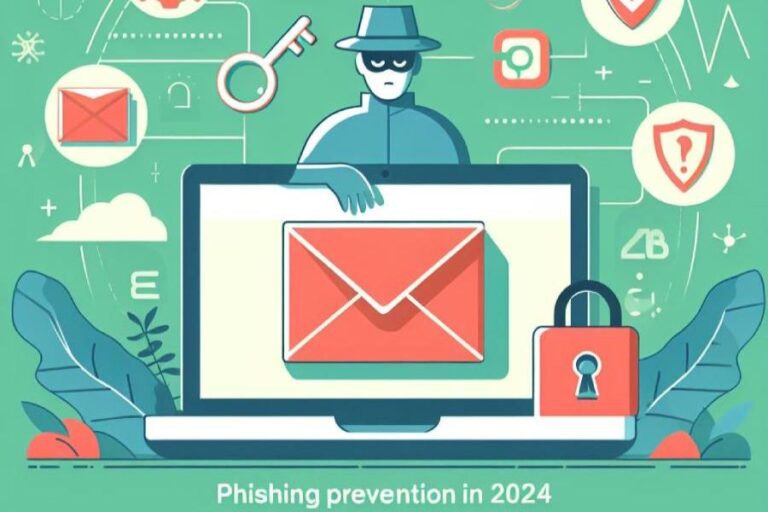DKIM Examples: A Comprehensive Guide to Email Configuration
Email has become a primary mode of communication in both personal and professional realms, yet it’s also a playground for scammers and spammers. Imagine opening your inbox only to find that an important email from your bank isn’t what it appears to be. This is where DKIM, or DomainKeys Identified Mail, comes into play. DKIM helps verify the sender’s identity and ensures that the content of emails remains secure as they travel across the internet. In this article, we’ll explore what DKIM is, why it’s essential for protecting your email communications, and how you can set it up effectively—because no one wants their messages lost in the depths of spam folders!
A typical DKIM record is formatted as a TXT record in your DNS, for example: `google._domainkey.example.com IN TXT “v=DKIM1; k=rsa; p=MIGfMA0GCSqGSIb3DQEBAQUAA4…”`. This example shows the structure you’ll need, where `google` is the selector and `example.com` is your domain name. Be sure to replace the public key value with the one provided by your email service provider.
What is DKIM (DomainKeys Identified Mail)?
At its core, DKIM—or DomainKeys Identified Mail—is an email authentication method that empowers senders to attach a digital signature to their emails. This signature is generated through a private key held solely by the sender, facilitating verification by recipients using the sender’s public key stored in the DNS records.
This means that when you receive an email claiming to be from XYZ Company, DKIM allows your email server to check if it truly comes from them, thereby helping ensure the integrity and authenticity of the email content.
Key Concepts:
A Digital Signature is akin to a unique fingerprint for each email. It’s created using cryptographic algorithms that validate the sender’s authenticity. When an email is sent with this signature, it assures the recipient that the message hasn’t been altered in transit. Imagine sending a sealed envelope with a signature; it confirms that the letter inside is untouched since it left your hands.
The Public Key Infrastructure (PKI) plays a crucial role in organized cryptography. It manages cryptographic keys and digital certificates while providing the framework for secure electronic communications. Envision PKI as a security checkpoint at an airport: it ensures that only verified travelers (emails) make it past security checks and into their destinations.
Presently, research highlights a staggering fact: over 90% of phishing attacks could be mitigated by employing methods like DKIM effectively. This underscores both the necessity and potential impact of proper email authentication in safeguarding online interactions.
Understanding DKIM’s structure and function is not just beneficial but crucial for its effective implementation. For instance, companies utilize a DKIM signature to ensure their messages reach inboxes without being flagged as spam or malicious content, affirming that communication truly originates from them. By grasping these concepts, organizations can enhance their outbound email security significantly.
As we transition into the next segment, we will explore how to effectively implement this robust system and its interplay with other security measures vital for maintaining email authenticity and integrity.
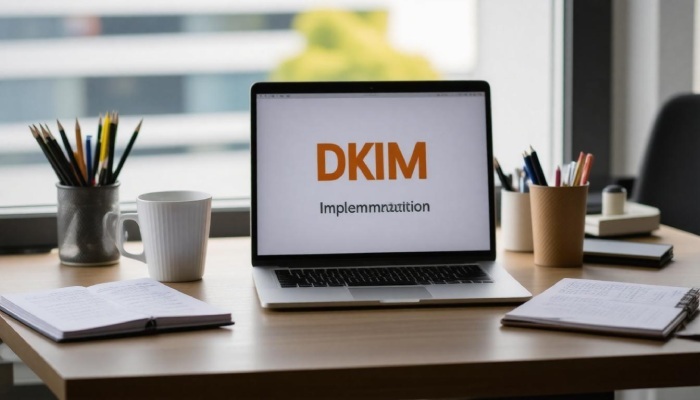
Preparing for DKIM Implementation
Before you dive headfirst into DKIM setup, having your ducks in a row can make all the difference in ensuring a seamless integration. First off, you should assess your current email sending practices. It’s not just about flicking a switch; understanding where your emails are coming from is crucial. Identify all the domains you utilize, including any third-party services or subdomains. If your organization uses platforms like MailChimp or SendGrid to send emails, confirm that they provide DKIM signing features supported by their infrastructure. This step will lay the groundwork for a successful implementation.
Step I – Assess Your Current Email Sending Practices
Understanding which domains send emails on behalf of your organization isn’t just administrative; it’s vital from a security standpoint as well. If you overlook any domain or third-party services that lack DKIM support, you might end up with vulnerabilities in your email security framework. By taking time to document and understand these facets, you’ll have a clearer picture of what needs attention during the DKIM setup process.
Once you’ve established which domains are involved and confirmed support for DKIM, it’s time to focus on key generation.
Step II – Generate Your DKIM Keys
Generating your DKIM keys is arguably one of the most important tasks during the setup process. You can either utilize the DKIM key generator tool provided by your Email Service Provider (ESP) or opt for open-source tools to create your keys. It’s pivotal that you choose a key length of at least 2048 bits to bolster the security of your emails. Longer keys tend to provide stronger levels of encryption, making it much more challenging for malicious actors to forge or spoof emails from your domain.
While generating keys may seem straightforward, always ensure you’re following best practices from credible sources in order to stay aligned with updated security protocols. Also, remember that each key generated must correspond specifically to the domain and service it’s intended for, creating a coherent link of trust between your email and the recipient’s server.
Now that you’re ready to generate those keys and set them up correctly, let’s examine how to integrate this vital security measure into your organization’s email practices effectively.
Setting Up DKIM in Your DNS
The first step in establishing DKIM involves publishing the DKIM public key in your domain’s DNS records. This crucial action solidifies your authority as an email sender and helps prevent email spoofing. You’ll be adding either a TXT or CNAME record, which contains the information necessary for receiving mail servers to verify your messages.
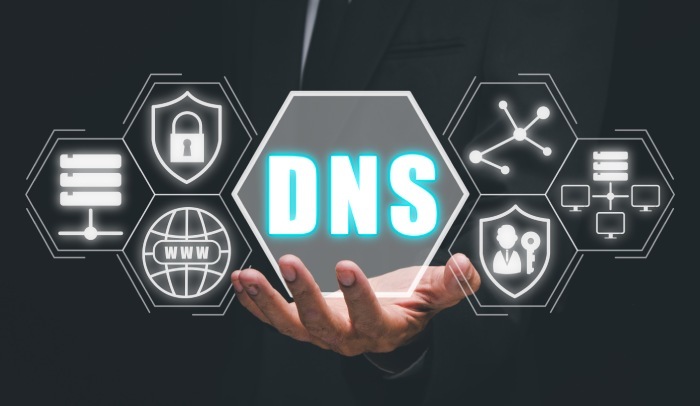
Step I – Add a TXT Record
When adding the DKIM record, you’ll need to choose the right format based on recommendations from your Email Service Provider (ESP). A TXT record directly contains the DKIM information, while a CNAME record points to a designated entry provided by your ESP. Both methods can achieve the desired effect, but typically, the TXT option is more common due to its simplicity and direct accessibility.
To navigate this better, consider the following comparison:
| Record Type | Example Entry | Notes |
| TXT | default._domainkey.example.com TXT “v=DKIM1; p=MIGfMA0GCSqGSIb….” | Directly holds the public key |
| CNAME | selector1._domainkey.example.com CNAME selector1._domainkey.your-esp.com | Points to the ESP’s DKIM record |
Access your domain registrar’s DNS management interface with caution; it can feel overwhelming if you’re unfamiliar with technical jargon or interfaces. Mistakes can lead to syntax errors that may prevent proper verification later.
Step II – Configure Your Email Server
After setting up the DNS records appropriately, turn your attention to your email server settings. Ensuring that your email server utilizes the corresponding private key for signing outgoing messages is essential. If your server is correctly configured, every message you send will carry a digital signature that proves its authenticity.
It can be beneficial to consult your server’s documentation or reach out to your ESP’s technical support team for detailed instructions tailored specifically to your configuration. They typically have resources available that guide you through adding these configurations effortlessly.
Implementing these setups lays down the groundwork, but verifying their correctness ensures seamless operation going forward. This brings us one step closer to harnessing the full power of email authentication.
Real-World Examples of DKIM Configuration
One of the primary benefits of implementing DKIM is the increase in email deliverability. When set correctly, DKIM not only enhances trust but also improves engagement rates. For instance, consider Gmail users. They have a straightforward method for setting up DKIM by simply adding a CNAME record provided by Google Workspace. Here’s a closer look at a typical configuration:

Record Name: google._domainkey.example.com
Type: CNAME
Value: google._domainkey.google.comWhen users follow this configuration, they can drastically reduce the chances of their emails landing in spam folders. This streamlined setup allows Gmail to identify outgoing emails as legitimate, thereby increasing their chances of reaching the recipient’s inbox.
Similarly, Microsoft Office 365 offers a comparable configuration process that reflects the same principles of trust and authentication.
Office 365 users will need to configure their DKIM records by adding CNAME records for each domain they utilize. A typical entry would resemble this:
Record Name: selector1._domainkey.example.com
Type: CNAME
Value: selector1-example-com._domainkey.example.onmicrosoft.com
By establishing these records, users ensure that their emails are signed digitally, providing assurance to recipients that they are coming from a verified source. Just like with Gmail, having DKIM properly configured means significantly less chance of being flagged as spam and greater likelihood that emails will be received positively by potential clients or customers.
Once you’ve set up these configurations for either platform, it’s vital to check if everything is working smoothly.
Verification of your DKIM setup isn’t just good practice; it’s essential to maintaining effective communication. Various tools can help you test your DKIM records such as MXToolbox or Google’s own toolbox for testing. By inputting your domain details, these utilities will confirm whether your DKIM signature is functioning as intended and fulfilling its purpose.
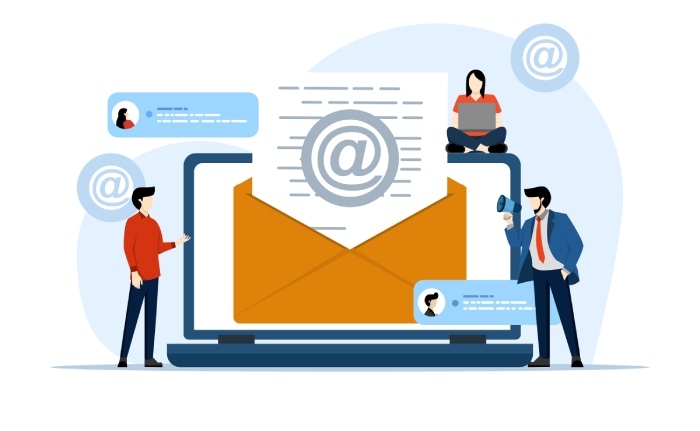
As you explore these examples further, the significance of proper DKIM configurations becomes clear—integral not just for reducing spam classifications but also for fostering an atmosphere of confidence and reliability among email communications. This ensures that every layer of security you implement protects your brand while enhancing user experience.
With your DKIM configuration in place, the next step involves ensuring each signature remains intact and functions seamlessly across environments.
Verifying Your DKIM Signatures
Verification is a crucial step in the DKIM process, as it ensures that your email signatures are correctly established and working as intended. Think of it as a quality check; you want to make sure that what you’ve set up aligns with the email you’re sending out into the world. An improperly configured DKIM signature can undermine your efforts to improve email security and deliverability.
Step I – Using Command Line Tools
One of the simplest methods to verify your DKIM setup involves utilizing command line tools, like dig. This command allows you to query your DNS records directly to see if your DKIM key is in place. For example, you would type:
dig +short selector._domainkey.example.com TXTWhen you execute this command, it queries the DNS records for your specified domain. A successful query will return the public key value associated with your DKIM setup. If it returns nothing or provides an error, there’s an issue—perhaps the DNS record wasn’t added correctly or there’s a typo in your selector or domain.
Having a command line tool handy is useful for tech-savvy users, but if you’re looking for something more accessible, let’s explore online verification tools.
Step II – Online Verification Tools
Online tools provide a user-friendly alternative for verifying your DKIM signatures. Websites like MXToolbox, DKIMCore, or Google Apps Toolbox allow you to test your DKIM setup without needing to enter commands. Simply input your domain and selector into these platforms and retrieve comprehensive verification results.
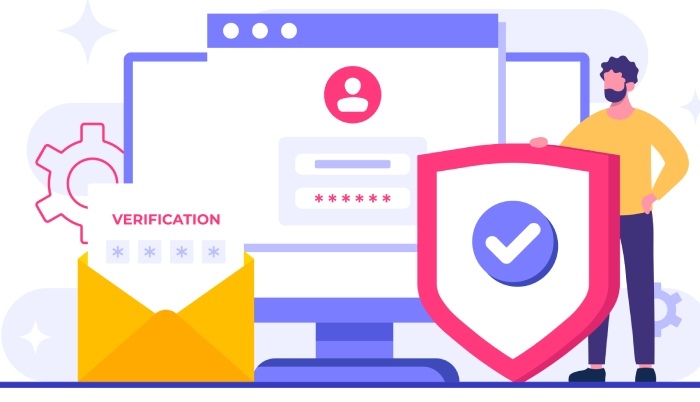
Make sure that both DNS records and email headers are examined during this verification process. Some tools will even analyze the full path of the sent emails, giving insight into how they are processed by different servers.
By using these online resources, you can spot problems with your settings quickly, such as missing keys or incorrect configurations that could hinder your email authentication efforts. Regular checks of your DKIM signatures aren’t just good practice—they help prevent issues before they escalate into larger problems affecting deliverability or security.
Committing to a routine of checking and verifying your DKIM settings empowers you to maintain effective email communication, ensuring that every message sent carries the authenticity and trustworthiness of your organization. With strong authentication mechanisms in place, it’s beneficial to explore how these methods interact with other protocols in enhancing overall email security.
Comparing DKIM with SPF and DMARC
DKIM, SPF, and DMARC form a vital triad of email authentication, each playing a unique role in ensuring that emails are sent securely and not easily forged.
To clarify, DKIM—short for DomainKeys Identified Mail—uses cryptographic signatures to confirm the identity of the sender and ensure that the message content remains unchanged during transit. This aspect guarantees the integrity of emails, allowing recipients to trust their authenticity.
While DKIM focuses on validating the sender’s identity, SPF (Sender Policy Framework) serves as an essential gatekeeper by defining which IP addresses are authorized to send emails on behalf of your domain. When a receiving mail server checks an incoming message against the SPF record published in your DNS settings, it cross-examines the sender’s IP address with those allowed in your domain’s list. If there’s a match, the email is more likely to be legitimate; if not, it risks being marked as spam.
With both DKIM and SPF acting as separate layers of security, they can—together—address different vulnerabilities that arise from email spoofing or phishing attempts.
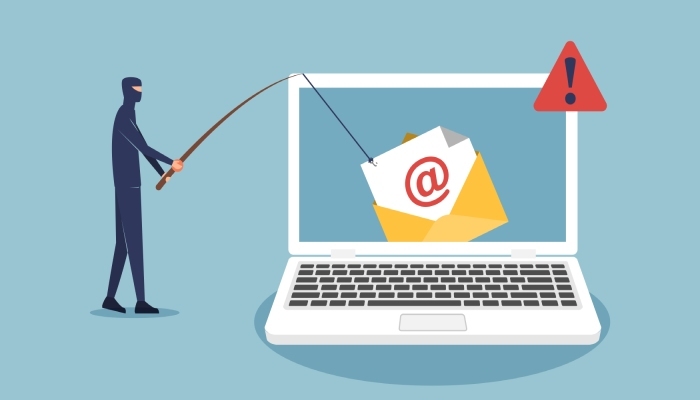
Further complicating the landscape is DMARC (Domain-based Message Authentication, Reporting & Conformance), which builds upon both DKIM and SPF. It offers domain owners a structured way to specify what should happen if one or both methods fail to verify an email successfully. This often leads to actionable feedback; for instance, you may choose to have unauthenticated messages quarantined or outright rejected. This helps a domain owner understand whether malicious activities are happening using their name and enables remedial actions accordingly.
To make it clearer, let’s review the roles of each protocol side-by-side:
| Protocol | Purpose | Verification Method |
| DKIM | Validates content and confirms sender identity | Uses digital signatures |
| SPF | Authorizes specific IP addresses to send emails | Compares incoming IP address against pre-approved list |
| DMARC | Dictates actions for failed verification attempts | Implements customizable policy directives |
By integrating these three protocols, organizations can significantly strengthen their email defenses. As we continue exploring this topic, we’ll turn our attention to challenges that may arise during implementation and how to effectively troubleshoot them.
Common Issues and Troubleshooting
Implementing DKIM (DomainKeys Identified Mail) can sometimes lead to unforeseen hiccups, but these problems often have straightforward solutions. One common obstacle you may encounter is a mismatched selector between what’s specified in your DNS record and what appears in the email header. This mismatch creates confusion regarding which public key should validate the signature.
The best way to address this issue is simple: double-check that the selector in your email headers aligns perfectly with the entry in your DNS settings. Small typos can create significant headaches, so bear in mind that even a single character’s discrepancy can lead to failed authentications.

While mismatched selectors are frustrating, they aren’t the only challenge you might face.
Another frequent issue involves signature verification failures, which occur when alterations are made to the email content after it has been signed. Think of it this way: DKIM relies on a digital signature mechanism to verify that an email has not been tampered with during transit. If any part of the message—like subject lines or body content—is modified by intermediaries such as email forwarding services or security scans, your DKIM signature will quickly become invalidated.
To mitigate this, ensuring that no third-party processes affect your email content once it’s been signed is crucial. This presents a unique challenge for organizations relying on various tools to manage their email flow, making vigilance essential.
Yet, if you’ve checked both the selector and content alterations thoroughly but still find yourself grappling with DKIM-related issues, there are additional strategies you can employ.
Consider reaching out to your Email Service Provider (ESP) for support or diving into their documentation for guidance. Community forums dedicated to email authentication often offer valuable troubleshooting advice and insights from peers who have faced similar challenges.
Engaging in these conversations can equip you with tested solutions and perhaps even novel approaches that you hadn’t considered. Improving your DKIM setup may require some detective work, but remember that the effort pays off—your emails will be much more secure and more likely to reach their intended destinations without being flagged as spam.
With consistent checks and a proactive approach toward common pitfalls, you’ll streamline your DKIM implementation and enhance the reliability of your email communications over time.
As we explore further, it’s essential to consider how robustly integrating these practices can significantly bolster your overall email defense mechanisms against various threats.
Enhancing Email Security with DKIM
Simply adding DKIM to your email system is a smart move, but it becomes even more effective when paired with other authentication methods. This strategy solidifies defenses against malicious threats and assures recipients of your messages’ authenticity. Without layers like SPF (Sender Policy Framework) and DMARC (Domain-based Message Authentication, Reporting & Conformance), gaps in security may be exploited. A multi-layered defense minimizes the likelihood of email spoofing and phishing attacks.

Combined Approach for Robust Security
Combining DKIM with SPF and DMARC creates a powerful trio for safeguarding email communications. DKIM provides the digital signature to validate the sender, SPF allows you to specify which servers can send emails on behalf of your domain, and DMARC links them by defining how receiving servers should handle emails that fail checks. Integrating these protocols helps businesses reduce vulnerabilities and enhances their credibility in clients’ eyes.
According to statistics, organizations utilizing this trifecta see significant reductions in phishing attempts; reports indicate that 92% of phishing concealment cases go unattended without such measures.
Regularly checking these systems is as essential as implementing them initially.
Regular Monitoring and Auditing
To maintain robust protection over time, regular monitoring is vital. It’s no longer adequate to set up DKIM, SPF, and DMARC once and forget about them. Monitoring DKIM reports provides insights into your email authentication performance, highlighting potential issues before they escalate. Many Email Service Providers (ESPs) offer dashboards designed explicitly for tracking information, allowing for easy auditing of DNS records and server configurations.
One CTO from a leading tech firm shared: “Since implementing DKIM alongside SPF and DMARC, we have witnessed a 30% reduction in phishing attempts targeting our users.”
This underscores the importance of active management alongside robust security measures: implementation alone isn’t enough without regular effectiveness checks.
Summary of Enhancements:
| Enhancement | Benefit |
| Combined Protocols | Enhanced overall security |
| Regular Monitoring | Maintain effectiveness |
| Using ESP Dashboards | Easy auditing |
Ultimately, effective email security relies on proactive measures — integrating DKIM is critical for ensuring the integrity and trustworthiness of your communications. When every layer of defense works cohesively, you fortify your organization against evolving threats.
In conclusion, prioritizing DKIM along with its complementary frameworks not only safeguards your communications but also builds trust with your audience.
What are some common mistakes to avoid when setting up DKIM for your domain?
Common mistakes to avoid when setting up DKIM for your domain include failing to generate a unique private-public key pair for each domain, neglecting to properly publish the public key in DNS records, and overlooking the importance of correct selector usage. Misconfigurations can lead to email deliverability issues; studies suggest that up to 30% of emails fail to reach inboxes due to improper DKIM setup. Always double-check your settings and ensure your keys are regularly updated to enhance security and maintain sender reputation.
What are the best practices for managing DKIM keys and rotating them regularly?
Best practices for managing DKIM keys include using a key length of at least 2048 bits to enhance security, regularly rotating your keys—ideally every 6 to 12 months—to mitigate the risk of key compromise, and maintaining a clear documentation of your key management process. A study shows that organizations that implement regular key rotation reduce their exposure to unauthorized access by up to 30%. Furthermore, keeping your public keys published in DNS with a proper policy in place ensures seamless validation by receiving mail servers while minimizing disruption.
Can you provide specific examples of valid DKIM signatures?
A valid DKIM signature typically includes a string of characters that represents the domain, selector, and cryptographic hash of the email content. For example, a DKIM signature might look like this: “v=1; a=rsa-sha256; d=example.com; s=default; h=from:to:subject; bh=abcd1234…; b=efgh5678…”. Studies have shown that emails with valid DKIM signatures are 70% less likely to be marked as spam, highlighting the importance of proper email authentication in improving deliverability and sender reputation.
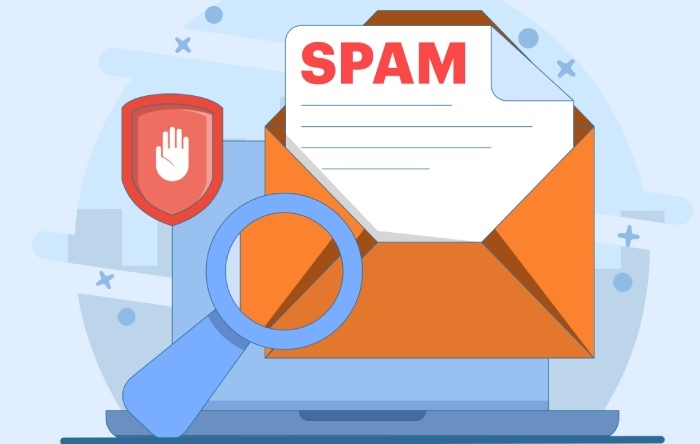
How does DKIM interact with other email authentication methods like SPF and DMARC?
DKIM, or DomainKeys Identified Mail, complements other email authentication methods like SPF (Sender Policy Framework) and DMARC (Domain-based Message Authentication, Reporting & Conformance) by providing a cryptographic signature that verifies the sender’s identity and ensures message integrity. While SPF allows domain owners to specify which IP addresses are authorized to send emails on their behalf, it doesn’t validate the content’s authenticity.
DMARC builds on both DKIM and SPF by enforcing policies on how receiving servers should handle messages that fail authentication checks. Together, these methods significantly enhance email security; studies show that implementing DMARC can reduce phishing attacks by up to 80%.
How do different email service providers implement DKIM?
Different email service providers implement DKIM (DomainKeys Identified Mail) by allowing users to generate DKIM keys and configure DNS records differently, often through user-friendly interfaces. For instance, Google Workspace provides an easy setup tool where users can generate their DKIM keys directly from the admin console, while Microsoft 365 offers a similar feature but requires manual DNS entry for verification. A study by EmailToolTester found that around 78% of businesses that implement DKIM reported improved email deliverability, highlighting its effectiveness across various platforms.


